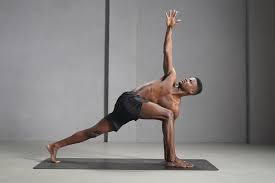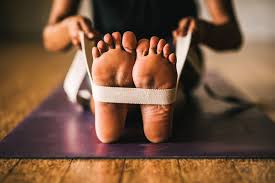Balance is an important aspect of physical health and well-being. Poor balance can increase the risk of falls and injuries, and can also limit our ability to perform everyday activities. Fortunately, yoga is a practice that can help to improve balance and stability in the body. In this article, we’ll take a closer look at how to use yoga to improve your balance, and explore some of the key poses and techniques that can help to promote better balance and stability.
The Benefits of Yoga for Balance
Yoga is a gentle and effective form of exercise that can help to improve balance and stability in the body. By practicing yoga regularly, you can improve your overall sense of balance, reduce the risk of falls and injuries, and improve your ability to perform everyday activities.
In addition, yoga can help to improve flexibility, strength, and posture, which can all contribute to better balance and stability. By practicing yoga, you can improve your physical health and well-being, and promote a greater sense of overall vitality and energy.
Key Poses and Techniques for Balance
There are many yoga poses and techniques that can help to improve balance and stability in the body. Some of the key poses and techniques include:
Tree Pose: This pose involves standing on one leg with the other foot resting on the inner thigh of the standing leg. This can help to improve balance and stability in the body, while also strengthening the core and leg muscles.
Warrior III Pose: This pose involves standing on one leg with the other leg extended behind the body, while also reaching the arms forward. This can help to improve balance and stability in the body, while also strengthening the core and leg muscles.
Chair Pose: This pose involves squatting down as if sitting in a chair, while also reaching the arms forward. This can help to improve balance and stability in the body, while also strengthening the leg and core muscles.
Half Moon Pose: This pose involves standing on one leg with the other leg extended out to the side, while also reaching the arm of the extended leg up towards the ceiling. This can help to improve balance and stability in the body, while also stretching the leg and hip muscles.

Mountain Pose: This pose involves standing with the feet hip-width apart and the arms at the sides of the body. This can help to improve overall posture and alignment, which can contribute to better balance and stability in the body.
In addition to these poses, there are several techniques that can help to improve balance and stability, including:
Breathwork: Deep breathing can help to reduce stress and tension in the body, which can contribute to better balance and stability. By practicing deep breathing techniques, you can help to calm the mind and body, and promote better balance and stability.
Meditation: Meditation can help to improve focus and concentration, which can contribute to better balance and stability. By practicing meditation regularly, you can train your mind to stay present and focused, which can help to improve your overall sense of balance.
Proprioceptive Training: Proprioceptive training involves practicing movements that challenge the body’s sense of balance and spatial awareness. By practicing proprioceptive training exercises, you can improve your body’s ability to respond to changes in balance and improve overall stability.
Tips for Practicing Yoga for Balance
If you’re interested in using yoga to improve your balance, there are several tips to keep in mind to ensure that you practice safely and effectively. Some key tips include:
Start Slowly: It’s important to start slowly and gently when practicing yoga for balance, especially if you’re new to the practice. Begin with simple poses and techniques, and gradually increase your intensity and duration over time.
Listen to Your Body: It’s important to listen to your body and respect your limits when practicing yoga for balance. If a pose or technique causes pain or discomfort, stop immediately and adjust your practice accordingly.
Work with a Yoga Teacher: Working with a qualified yoga teacher can help to ensure that you practice safely and effectively, and can provide you with guidance and support as you explore the practice of yoga for balance.

Use Props: Props such as blocks or straps can be helpful for providing additional support and stability during yoga poses. Consider using props as needed to help you maintain your balance and stability during your practice.
In addition, it’s worth noting that the benefits of practicing yoga for the chakras extend beyond the physical and emotional realms. By activating and balancing the chakras, you can also promote spiritual growth and development, and cultivate a greater sense of connection to the universe and the divine.
So, whether you’re new to yoga or a seasoned practitioner, consider exploring the practice of yoga for the chakras, and see how it can help to promote greater balance and well-being in your life. With regular practice, you can activate and balance the chakras, and enjoy all the benefits that this wonderful tradition has to offer.
In Conclusion
Yoga is a practice that can offer many benefits for improving balance and stability in the body. By practicing yoga regularly, you can improve your overall sense of balance, reduce the risk of falls and injuries, and improve your ability to perform everyday activities. So, whether you’re new to yoga or a seasoned practitioner, embrace the practice of yoga for balance, and enjoy all the benefits that this wonderful practice has to offer.
Remember, it’s important to approach practicing yoga for balance with care and respect for your body. Start slowly and gently, listen to your body, and work with a good qualified for yoga teacher to ensure that you practice safely and effectively. With these keep in yours tips in mind, you can enjoy all the benefits of practicing yoga for balance, and improve your overall sense of physical health and well-being.
In addition, yoga can help to improve flexibility, strength, and posture, which can all contribute to better balance and stability. By practicing yoga, you can improve your physical health and well-being, and promote a greater sense of overall vitality and energy.
In addition, it’s worth noting that the benefits of practicing yoga for balance extend far beyond the physical benefits. By practicing yoga, you can also cultivate a greater sense of inner peace, relaxation, and spiritual well-being. So, whether you’re looking to improve your physical health or simply deepen your spiritual practice, embrace the practice of yoga, and enjoy all that this wonderful tradition has to offer.






